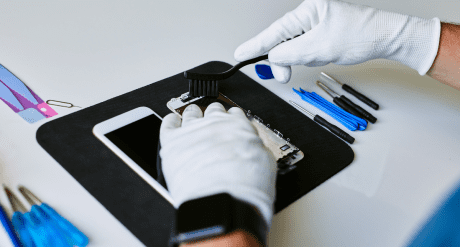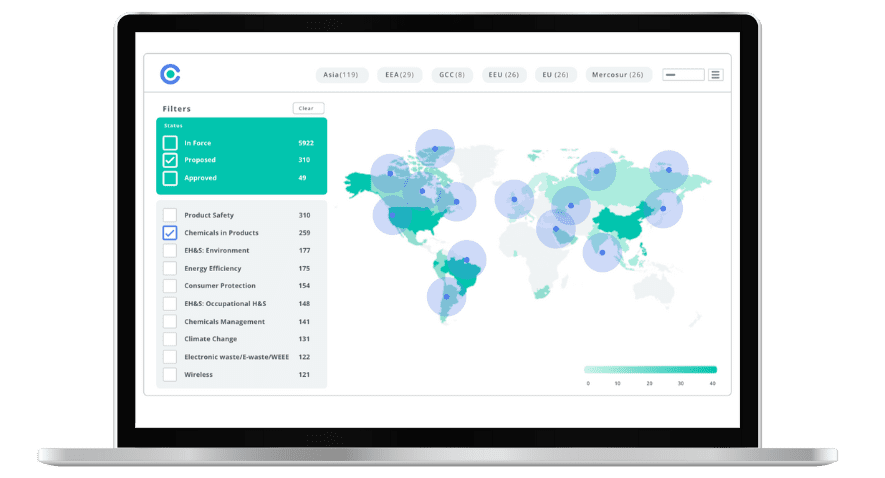
Flame Retardant Chemical Restrictions in Electronics in New York State

This blog was originally posted on 21st May, 2024. Further regulatory developments may have occurred after publication. To keep up-to-date with the latest compliance news, sign up to our newsletter.
AUTHORED BY KELLY BUGIERA, SENIOR REGULATORY COMPLIANCE SPECIALIST, COMPLIANCE & RISKS
Introduction
Flame retardants are a class of chemicals that have sometimes been added to furniture, mattresses, electronics, and other products. These flame retardant chemicals are intended to help prevent the start of fire or to slow the spread of fire. However, many flame retardants have been known to be associated with adverse health effects in both animals and humans, with children being particularly susceptible. Flame retardant chemicals can also be difficult to break down, so may remain persistent in the environment or a home for years.
In this blog, we look at New York State’s flame retardant chemical restrictions.
Flame Retardant Chemical Restrictions in New York State
In an effort to address these concerns, New York State enacted the Family and Fire Fighter Protection Act on December 31, 2021.
The Act added a new Title 10 to Article 37 of the Environmental Conservation Law (ECL), Regulation. The Act prohibits the use of certain flame retardant chemicals in specified products and requires annual reporting for organohalogen flame retardants that have been used in electronic display stands and enclosures.
Electronics Products and Chemicals Covered by the Law
The Law applies to “organohalogen flame retardant chemicals” that have been used in the stands and enclosures of electronic displays. Definitions for each of these product categories, as well as the covered chemicals, can be found here: Article 37, Title 10 of the ECL.
Flame Retardant Chemical Restrictions for Electronics
Effective December 1, 2024, the sale or offering for sale of electronic displays that contain organohalogen flame retardant chemicals in the enclosure or stand, which have been intentionally added, will be prohibited in New York State.
Please note that New York Department of Environmental Conservation (DEC) is in the process of developing additional details regarding the implementation of these flame retardant chemical restrictions. They intend to share that information with affected stakeholders, upon completion.
Ensuring Compliance with the Law
Since the DEC has not yet established restriction levels for flame retardant chemicals in regulation, the statutory prohibitions which become effective on December 1, 2024 will apply to the sale or offering for sale of new covered products, including electronic displays, that contain intentionally added flame retardant chemicals.
The DEC notes that the best source of information regarding whether or not covered products, including electronic displays, contain intentionally added flame retardants will likely be the manufacturer or supplier of these items. In order to ensure compliance with the prohibitions in the Law that take effect on December 1, 2024, DEC recommends that anyone selling or offering for sale covered products, including electronic displays, consult with the manufacturer or supplier as soon as possible in an effort to confirm that covered flame retardant chemicals are not intentionally added to the product.
Compliance Certification
A compliance certification is a written statement from a manufacturer of a covered product that is intended to assure the covered product complies with the Law. Anyone selling covered items is encouraged to obtain compliance certifications from their suppliers in order to demonstrate that their products are compliant with the requirements of Title 10 of ECL Article 37. The compliance certification must state that the specific covered products comply with Title 10 of ECL Article 37. This compliance certification must be signed by an authorized official of the manufacturer.
Compliance certifications should be maintained on-site where the specified covered products are being sold or offered for sale. However, these certifications do not need to be submitted to the DEC unless specifically requested. Upon request, certifications may be submitted either as a hard copy or in digital form, within a reasonable time period and may cover multiple products that are sold or offered for sale by an individual manufacturer.
Stay Ahead Of Regulatory Changes in Flame Retardant Chemical Restrictions
Want to stay ahead of regulatory developments like flame retardant chemical restrictions in electronics?
Accelerate your ability to achieve, maintain & expand market access for all products in global markets with C2P – Your key to unlocking market access, trusted by more than 300 of the world’s leading brands.
C2P is an enterprise SaaS platform providing everything you need in one place to achieve your business objectives by proving compliance in over 195 countries.
C2P is purpose-built to be tailored to your specific needs with comprehensive capabilities that enable enterprise-wide management of regulations, standards, requirements and evidence.
Add-on packages help accelerate market access through use-case-specific solutions, global regulatory content, a global team of subject matter experts and professional services.
- Accelerate time-to-market for products
- Reduce non-compliance risks that impact your ability to meet business goals and cause reputational damage
- Enable business continuity by digitizing your compliance process and building corporate memory
- Improve efficiency and enable your team to focus on business critical initiatives rather than manual tasks
- Save time with access to Compliance & Risks’ extensive Knowledge Partner network

Chemicals Quarterly – Q1 Regulatory Update 2024
An overview of the latest news on permitted, restricted and prohibited substances in a variety of products from around the world.


